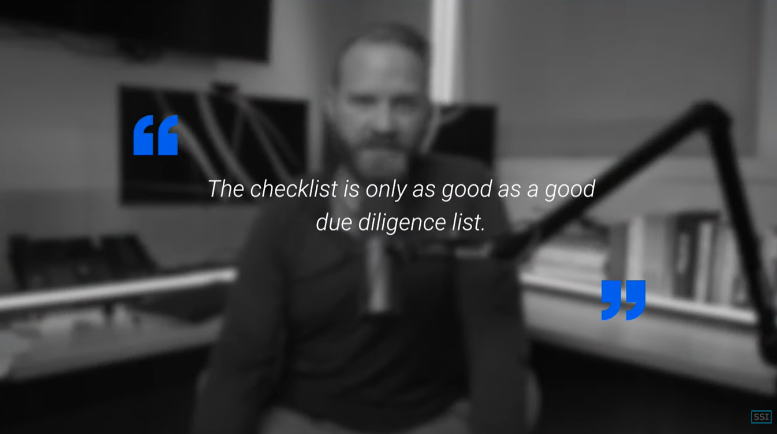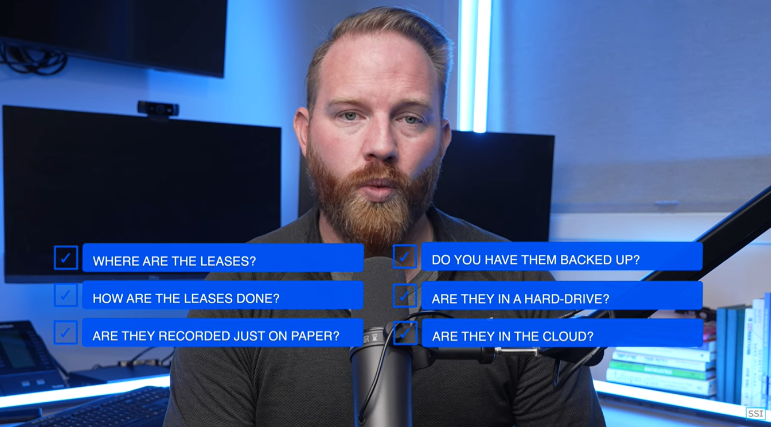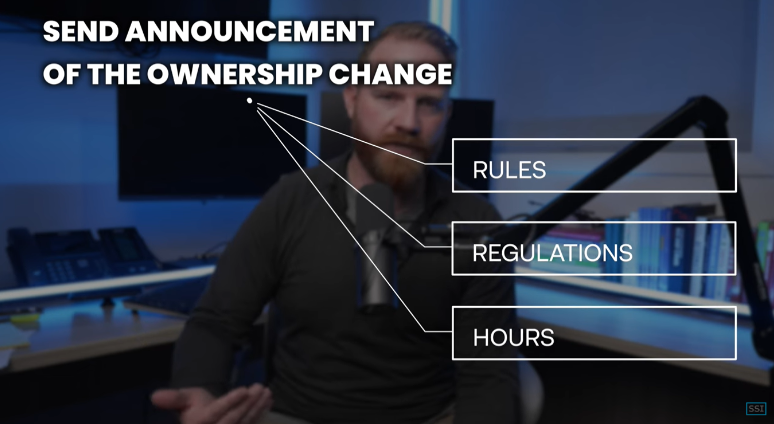
How to Close on a Self-Storage Facility - For New Owners
Oct 16, 2023Today, our discussion revolves around the topic of Closing Day. Having successfully identified and purchased the desired storage space is an excellent achievement. However, the subsequent steps are critical, akin to the process of grasping a challenging opportunity. Therefore, let us delve into the matter at hand.
Navigating Changing Day: A Practical Guide to Smooth Facility Ownership Transfer
Closing day, also known as the changing day, holds significant importance as it signifies the official assumption of ownership of the storage facility. The successful execution of various crucial tasks on this day is essential. It is understandable that this phase can be particularly daunting, particularly for individuals who are new to the ownership of a storage facility.
Changing day is accompanied by anxiety for several reasons. Firstly, it is imperative to ensure the uninterrupted continuity of business operations. Secondly, in cases where comprehensive familiarity with every minute detail of the facility may be lacking, the potential for unforeseen challenges arises. It is noteworthy that such unexpected situations have been encountered in the past, and they have provided valuable insights for learning and improvement.

Our checklist has expanded considerably due to the inclusion of various unforeseen events encountered during the transition day. This checklist's efficacy is contingent upon the thoroughness of the due diligence list prepared prior to assuming ownership. It is essential to emphasize the significance of the due diligence list, as it serves as a safety measure for the entire process.
Big Nightmare
Here's an example. Upon taking over the facility, the previous owner had claimed to have signed leases with tenants, with some physical evidence to support the assertion. However, upon closer inspection, it was discovered that out of 600 tenants, approximately 500 had no formal lease agreements in place. This discrepancy proved to be a significant challenge, leading to a complex situation characterized by a lack of legal agreements with the occupants of the storage spaces. This was a major setback and a considerable complication.
The task at hand now involves the necessity of securing leases from each tenant. However, the motivation for tenants to sign such leases can be questioned, as they have been using the storage spaces without formal agreements, which may be perceived as beneficial to them rather than to the facility owner. Encounters of this nature have been instrumental in shaping the changing day checklist, serving as valuable lessons learned through firsthand experiences. It is imperative to acknowledge that despite potential unexpected developments, with adequate preparation, one can effectively navigate the challenges that may arise during the transition day.
Checklist for Closing Day
- Utilities: This task should be accorded top priority, without any delay. The essential utilities, such as internet and water, must undergo a swift transition to be registered under the new business name. This action is of utmost importance, particularly in cases where facilities require the availability of amenities like bathrooms and running water.
- Employees and third parties: Another significant aspect to consider when acquiring a storage facility that already employs staff or engages third-party contractors is the need for meticulous management. It is imperative to confirm their alignment with your contract terms, whether you intend to retain them or implement changes. This principle applies to both in-house employees and external contractors. Prior to initiating any transitions, it is essential to compile all requisite information and details from these individuals or entities.
Within our contractual arrangements, we bring these personnel on board, effectively concluding their employment with their current employer. Upon our takeover, we subsequently employ them under our specific terms. This practice holds significant importance, particularly for employees who play pivotal roles in the day-to-day operations of the storage facility. Even in cases where direct employees may not be present, it is possible that various third-party entities are involved, encompassing responsibilities such as maintenance, lock checks, unit cleaning, online advertising, website management, and various other functions.
Consequently, upon commencing operations at the facility, a proactive and efficient approach is necessary. This involves being fully prepared to onboard new tenants, have them execute lease agreements, and seamlessly integrate them into your operational framework. Let us now explore a couple of key points that warrant detailed discussion.

- Know your local bank. The importance of a well-structured financial framework of establishing a robust banking infrastructure when seeking a loan. While this may seem self-evident, it is often disregarded. It is crucial to not only have a reputable banking institution in place but also a well-organized cash management system. When dealing with cash transactions, it becomes essential to inquire: where are these funds being directed? In which banking institution are they being deposited? One must also meticulously assess their local banking arrangements and ascertain the efficiency of their overall financial management.
Getting these banking aspects squared away is fundamental for a seamless start.

- Do an audit. It is essential to ensure the presence of all items promised in the property sale. This includes office equipment, boxes, locks, and any other specified assets. A comprehensive inspection akin to an audit should be conducted to verify the fulfillment of these commitments.
If you're keeping a previous employee, talk to them. Inquire about their awareness of any outstanding maintenance concerns. Initiate the resolution of any identified issues promptly and prevent their accumulation.
- Familiarize yourself with the filing systems. Determine the location of lease documents, the manner in which they are organized, and their recording format, whether in hard copy or digital. Assess the security measures in place, such as backups on hard drives or cloud storage, and ensure the completeness and accuracy of these critical records.

- Do a lock audit. Conduct a comprehensive lock audit as part of your initial duties. Verify the status of all locks to ensure they are in proper working order. Subsequently, shift your focus to aligning the property management system with the actual status of the property. While it may appear self-evident, discrepancies between system data and the physical state of the property can be surprising. There may be several reasons for this misalignment, such as unauthorized off-the-books rentals by managers or occupants utilizing units without proper documentation.
By executing a meticulous lock audit and cross-referencing the information, you are ensuring that the commitments made are consistent with the reality on the ground. This alignment is crucial for effective property management.
- Delinquent tenants. Promptly assess the payment status of tenants, particularly those in arrears. Take swift action with non-compliant tenants by implementing overlock procedures to either prompt payment or facilitate their vacating the premises. It is essential to act decisively, especially on your first day, to establish control over the facility from the outset.
- Re-key and re-tool everything for security. When transitioning, prioritize the enhancement of security measures. This includes the replacement of locks, particularly overlocks, to prevent unauthorized access by the previous owner or any other unauthorized parties with master keys.
- Audit your files. Conduct a comprehensive audit of your documentation. Scrutinize your files for any inconsistencies or administrative errors. Although it may be a meticulous process, it is imperative. Pay particular attention to licenses and ensure that all vehicles on the premises are compliant with state requirements and adequately documented.
Regarding delinquent tenants, thoroughly examine their lease agreements. Determine the duration of their non-payment and review all prior communications extended to them. Ascertain whether they have been served with any delinquency notices. This scrutiny will provide a clear understanding of when the lien process can be initiated.

- Vendors. Conduct an in-depth evaluation of crucial components, including security cameras, monitoring systems, alarms, power supply, and waste management. Compile a comprehensive inventory encompassing essential services such as sprinkler systems, snow plowing, door repairs, property maintenance, and janitorial services, essentially encompassing all elements necessary for the seamless day-to-day operations of the facility.
In addition to the major components, it's important to consider the finer details, including merchandise cells, mailboxes, phone systems, and advertising services. On your first day, it is essential to scrutinize all associated contracts to verify their current validity and operational status. Unforeseen disruptions can occur if the prior owner's agreements expire, leading to potential inconveniences, such as alarm systems deactivation or unauthorized halting of advertising campaigns.
It is crucial to ascertain the responsible parties for each of these responsibilities. This proactive approach ensures the facility's uninterrupted operation during the transition, allowing you to focus on generating new sales and optimizing operational efficiency.
- Property Management Systems. It is important to guarantee the harmonious integration of the gate system with your new property management system. This integration is frequently overlooked. The functionality of your own system may be compromised if the gate system does not seamlessly align, potentially resulting in access, payment, and security-related issues.
Furthermore, the transfer of data from the old system to the new one is essential. However, it doesn't conclude there. It is crucial to meticulously cross-reference reports generated by the old system with those produced by the new system to ensure a seamless transition. The significance of this step should not be underestimated.
Mastering Data Comparison: A Guide to Ensuring Accurate Transition of Information
When transitioning to a new property management system, it is imperative to conduct a thorough comparison of reports to ensure the accuracy of data transfer. There is no room for erroneous information in the new system. Pay meticulous attention to gathering account and unit information as you initiate this process. Sometimes, it may be necessary to prompt individuals to sign new leases or provide required information. Using strategies such as mailers and phone calls with incentives can be effective in encouraging compliance. For example, a message stating, "Sign up for our new lease or face a 30% rate increase!" often produces results.
Change in Ownership Notification
Additionally, it is vital to issue a notice to all relevant parties regarding the change in ownership. This communication should encompass an array of topics, including new rules, regulations, operational hours, and all pertinent details, ensuring that all individuals are well-informed about the forthcoming operational changes.

Nailing the Transition: Facility Name Change and New Management Strategy
In our experience, the transition to a new facility name and management strategy requires a well-thought-out approach. We didn't rush into changing the facility name; instead, we implemented a strategic plan. We initiated a significant rate increase of approximately 65% right from the first day, alongside a complete overhaul of our operational systems.
Once emotions settled, and tenants were more receptive to change, we proceeded with the rebranding and renaming process. The results were impressive. While we had previously received negative online reviews under the old name, these criticisms largely disappeared once we rebranded. We saw a significant improvement in our online reputation, with fewer negative hits on search engines like Google and Yahoo.
However, this transition isn't merely a name change. It encompasses a comprehensive package, including updating signage to align with our online presence. We prioritize transparency and have placed notices around the facility to inform tenants of this fresh start and our commitment to enforcing new rules.

In terms of business operations, it's crucial to ensure that pricing consistency is maintained. The facility's website must align with the property management system and reflect the updated rates accurately. This is essential to avoid any issues related to false advertising or tenant demands for the old pricing. We have learned from past mistakes, such as system errors giving away units for free, and we are committed to preventing such oversights in the future.
Setting the Stage for Success: Facility Cleanliness and Maintenance
Before implementing the major changes, several critical aspects require our attention. First and foremost, the facility must meet stringent cleanliness standards. Furthermore, it is imperative to ensure that all equipment, including snowplows, printers, and other resources, are easily accessible and in optimal working condition.
Coordinating these efforts is essential. They should seamlessly align with the due diligence you've conducted. Timing plays a pivotal role, and any potential challenges or obstacles need to be identified and addressed before the commencement of day one.
Why is this level of preparation so crucial? It's all about maintaining the facility's smooth operation, akin to a well-oiled machine, conducting business as usual. This is vital to increase the facility's value and drive rental rates upward. This aspect is not to be underestimated.
Crucial Point to Remember: Taking Swift Action
This phase is undeniably important, as unforeseen issues may arise - matters that weren't initially anticipated. It's imperative not to be overly concerned about these potential challenges. The key is to identify and address them as swiftly as possible. You might come across cases of tenants occupying units without paying or experiencing significant payment delays.
When these issues come to light, it's important to take swift and decisive action. Avoid a gradual approach. Implement rate increases promptly, initiate cleaning efforts, and resolve delinquencies without delay. The quicker these issues are resolved, the sooner you set the stage for the facility's new operational standards, ensuring tenants are informed and adhere to the updated rules.

There should be no delay in taking action. Immediate rate increases and a comprehensive cleanup operation are necessary. The sooner these matters are addressed, the faster you establish the framework for the facility's future operations. It is essential for tenants to understand and adapt to the new operational plan. It's possible that some may choose to vacate the premises, which is acceptable. This presents an opportunity to welcome new tenants who align with your vision for the facility.


